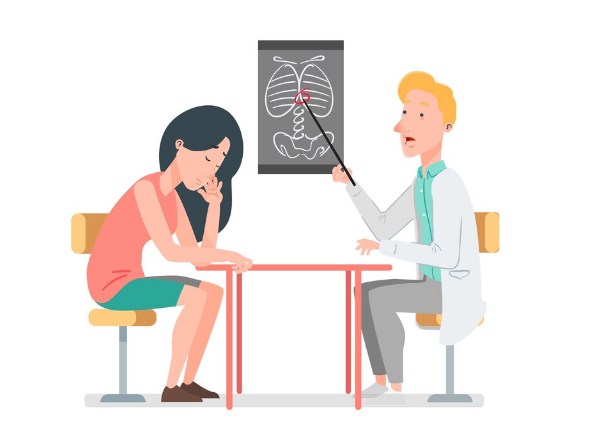PFTs, or pulmonary function tests, are a non-invasive method of evaluating a patient's lung health. The tests examine lung volume, capacity, flow rates, and gas exchange, among other features of the lungs. The most cutting-edge technology are available to diagnose and track lung disorders in the well-equipped Laboratory for Pulmonary Function Testing (PFT).
To test patients at risk for lung disorders, the team of skilled pulmonologists and technicians uses the most up-to-date PFT technology. PFT is a collection of tests used to assess lung function and efficiency. This includes the quality of your breathing and the efficiency with which your lungs distribute oxygen throughout your body.
For whom is pulmonary function testing appropriate?
An essential tool for the examination and follow-up of patients with respiratory disorders is the Pulmonary Function Test (PFTS). They offer crucial details on the pulmonary parenchyma, the size and integrity of the pulmonary capillary bed, and the big and small airways.
When evaluating a kid who has a known or suspected respiratory condition, pulmonary function testing, or PFT, is crucial. In order to improve treatment, the objective is to identify and track the pathophysiologic elements of the patients' respiratory disorders.
Patients are recommended to undergo pulmonary function tests (PFTs) for a variety of reasons. These tests are recommended for those who work in hazardous workplaces and are exposed to certain compounds like sawdust, coal, asbestos, graphite, paint, etc. in their work areas, or as part of a regular physical examination. Additionally, it is recommended for those with health issues like:
- Respiratory infections
- Allergies
- Breathing difficulties (caused by an accident or recent surgery)
- Long-Term Lung Disorders
- Chronic bronchitis
- Bronchiectasis
- Emphysema
- Asthma
- asbestosis (from breathing in asbestos fibers)
- restrictive airway issues
- Scoliosis
- Abnormalities
- lung inflammation
- lung scarring
- Scleroderma (a condition that results in the thickness and hardening of connective tissue)
- Sarcoidosis (a condition that results in the development of masses of inflammatory cells surrounding organs)
What are the various procedures involved in Pulmonary Function Testing?
The Center is one of the few that can carry out a number of special procedures, including:
Spirometry: A spirometer is a tool used to gauge lung size and quantify airflow rate. The test requires the patient to breathe repeatedly through a mouthpiece that is connected to a tiny electronic device.
Plethysmography: The lung's volume is measured using this technique. A patient must sit or stand within an airtight box that resembles a telephone booth in order to undergo the test. The patient is then given a mouthpiece to breathe in and out of.
Lung Diffusion Capacity: Lung diffusion capacity is a test used to measure the transfer of oxygen from the lungs into the blood stream. The outcomes provide insight into the blood flow to the lungs and the function of the lung tissue. The test is inhaling a gas through a tube, holding the breath for a brief moment, and then exhaling the gas through the tube. Both adults and children are subjected to these tests.
Impulse Oscillation Testing (IOS): This test measures airway resistance to determine how narrow your airways are. The test measures the stiffness of your lungs and can differentiate between the resistance of your major and small airways. You must silently inhale and exhale for 30 seconds at a time during the exam. This test is simpler to administer, and even small children can take it.
Measures of PFT
Tidal Volume (VT): Measures the amount of air a patient inhaled or exhaled during normal breathing.
A patient's minute volume (MV): is a measurement of how much air they can exhale in a minute.
Residual Volume: Used to measure the amount of air left in the lungs after exhaling as much as a patient can.
Vital Capacity (VC): Measures the total volume of air that a patient can exhale after inhaling as much air as he/she can
Functional Residual Capacity (FRC): Measures the amount of air left in the lungs after normal exhaling.
Total Lung Capacity: Indicates how much air a person can breathe in by measuring the volume of their lungs.
Forced Vital Capacity (FVC): Indicates how much air a patient can swiftly and powerfully exhale after taking as much in as possible.
Forced Expiratory Flow (FEF): Measures the average rate of flow of air during the middle half of the FVC test.
Peak Expiratory Flow Rate (PEFR): Indicates how quickly a patient can expel air from their lungs.


 WhatsApp
WhatsApp